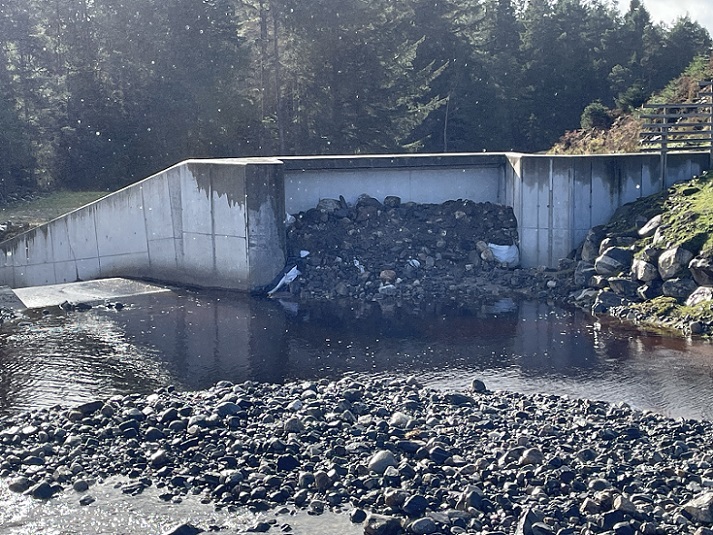
Work by the Pitmain Estate to rebuild the River Gynack overflow, which had failed soon after it was initially constructed in 2017, appears to have been completed in August. The rationale behind the work and why it had not been re-opened by the time of the floods on Speyside in early October has not been made public. This post takes a look at the issues and the abdication of responsibility by Highland Council and the Cairngorms National Park Authority (CNPA).
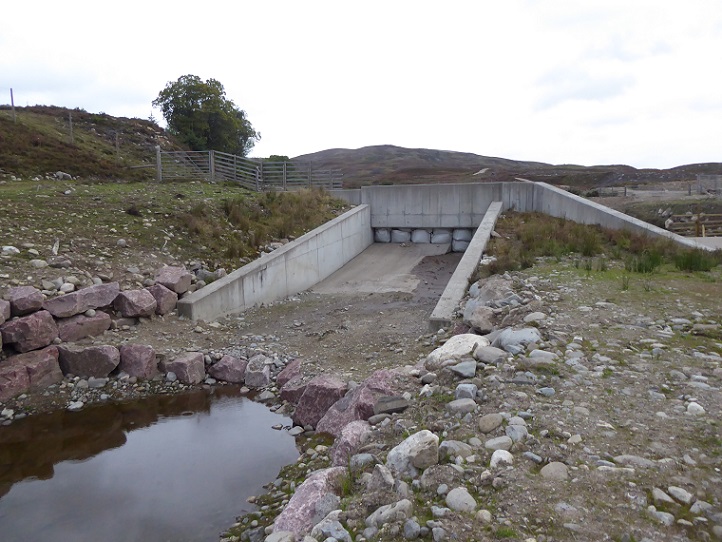
Background
Since 2009 each Local Authority in Scotland has had to produce a Flood Prevention Plan, identifying communities and areas at risk and setting out proposals to address those risks.
From this arose the proposal from Highland Council to protect vulnerable areas in Kingussie by diverting some of the waters of the River Gynack round via Loch Gynack in order to reduce the level of the river as it flowed down through the village. The Pitmain Estate was receptive to the plan, which offered the potential to increase the revenue earned from the hydro scheme located at the outflow to Loch Gynack, and Highland Council agreed to contribute half the costs (c£135k).
The Pitmain Estate then applied for planning permission for the overflow. Serious design flaws, concealed in part by inadequate documentation and consultation, were allowed to go through without adequate scrutiny and planning permission was granted by the CNPA in June 2016. Those design flaws became obvious on completion (bare banks built of peat) but instead of requiring the developer to address these, the CNPA allowed their contractors, McGowan, to leave the site.
The overflow was then seriously damaged by flood water and had to be blocked up (see here) . My calls for an inquiry by Highland Council and the CNPA Board into what went wrong from an engineering perspective have never been taken up.
Since then I have made a number of enquiries to the CNPA about what was happening and suggested enforcement action would be appropriate, only to be told the matter was Pitmain Estate’s responsibility. Five years after the overflow was closed, work to repair it started this year without planning permission. I
After further enquiries in June I was told Pitmain would be sending their plans to the CNPA but despite following this up in September and October I have been unable to ascertain if they have been received: if so, they have still not been published. That means there is nothing public to explain why the “repairs” will work when the original failed.
Throughout all this, the Pitmain Estate’s right to burn (see here) and overgraze the land in the catchment of the River Gynack has remained unchallenged. Intensive grouse moor management plays a major role in the levels of flooding experienced by those living below, as in the village of Kingussie. Despite this, just as on the River South Esk above Brechin (see here), the CNPA along with other public authorities has kept silent. None appear prepared to challenge large landowners.
Will the re-designed and repaired overflow channel work?
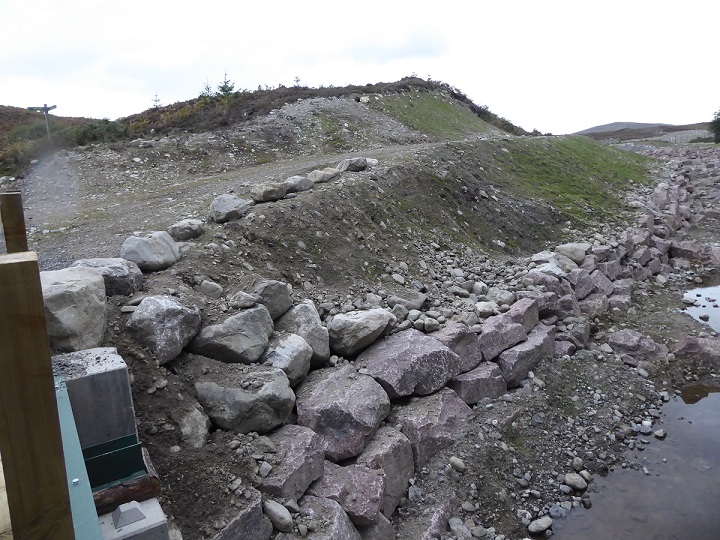
The basic design of the new overflow appears, from three site visits, to be little different than the previous one. The banks of the top section of the flood channel are protected by rip-rap bouldering while those lower down are still of earth. The main differences are that the floor of the top section of the channel has been reinforced while the lower section is far far wider with stepped banks which will enable flood water to spread out and dissipate its force.
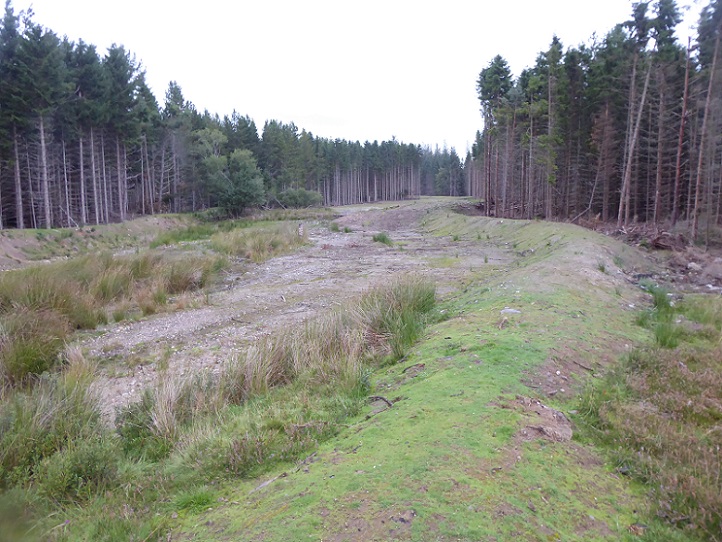
One lesson appears to have been learned from the previous failure, the earth banks are being allowed to re-vegetate before being re-opened. Hence why the overflow channel was still closed during the flooding that took place in early October. Just when the channel will re-open is unclear but let’s hope it won’t be like the funicular repairs, which the CNPA did actually approve, fundamentally flawed!
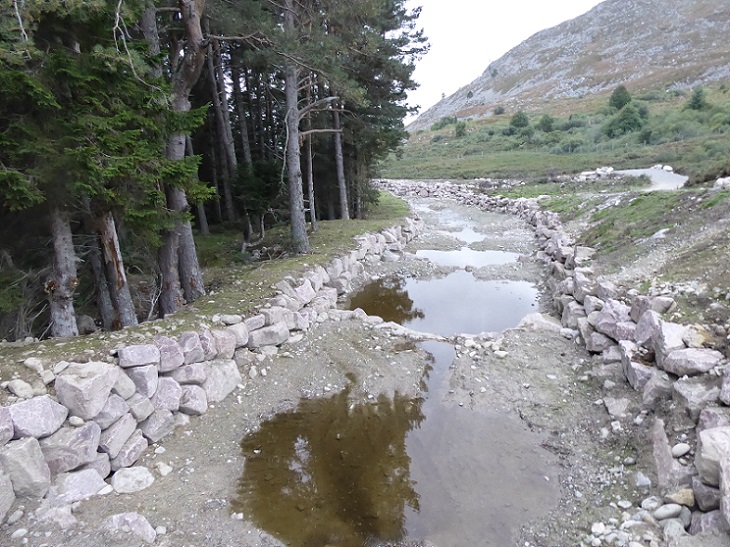
The locally sourced stones used for the rip-rap bouldering in the first version have been replaced by imported quarried stone, brought in at significant cost and not reflecting the local geology. By allowing the repairs to proceed without planning permission CNPA board members have been denied the opportunity to consider either the landscape or the carbon issues.
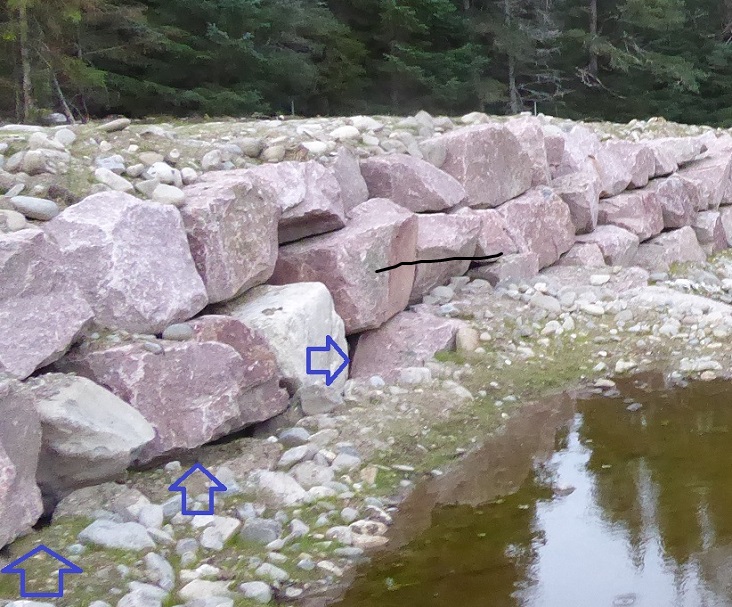
To me the rip-rap bouldering looks not that different to before and, without sight of the civil engineers’ drawing and justification, it is not clear why flood water shouldn’t prise the new boulders from the banks just as they did before. It appears that CNPA officers are prepared to wait and see but should the rip-rap bouldering fail that should put both themselves and the National Park in a very difficult position.
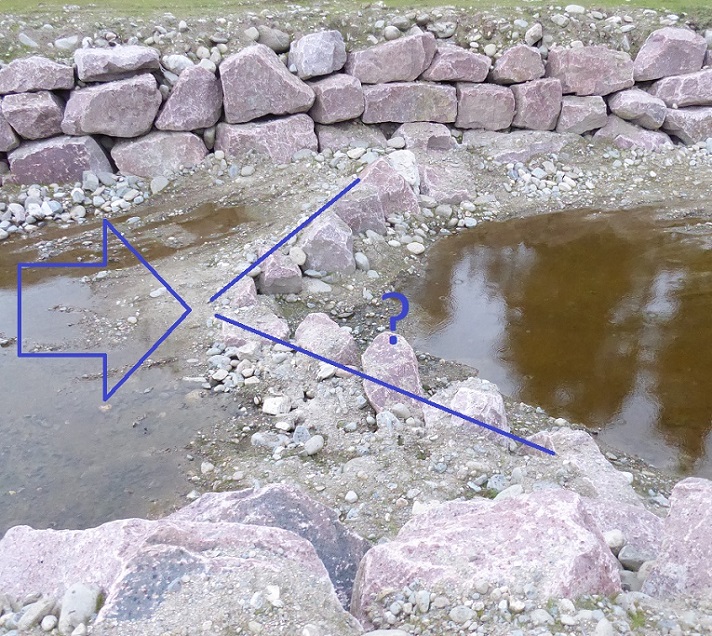
The floor of the first version of the channel quickly eroded and the rock was swept bare in places. The rationale for the new v-shaped rock barriers may be an attempt to prevent this but if so the rationale has not been explained. Alternatively, the idea may be to retain pools of water for acquatic life when the upper section of the channel is not working (lower down the overflow is fed by a burn).
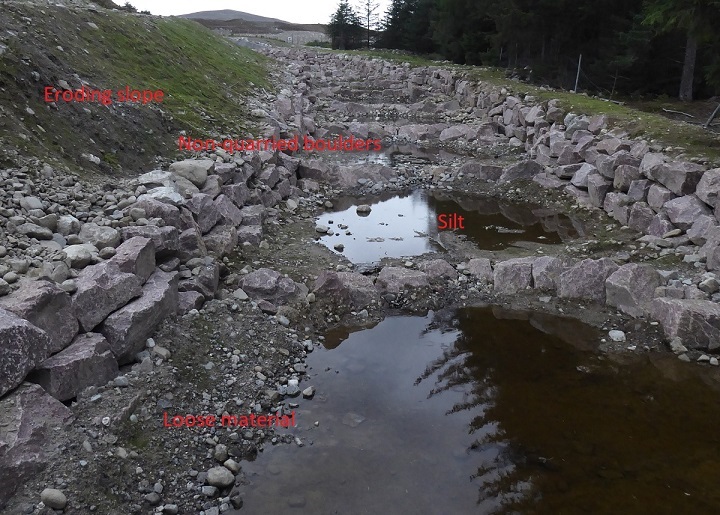
In the first section of the overflow there is plenty of “loose material ” (front left), extensive silt and, once that is washed away, further material from the eroding slope above to replace it. It does not look very good habitat for wildlife. Whatever the intention, it appears that some of the rip rap bouldering and rock barriers are also vulnerable to being swept away.
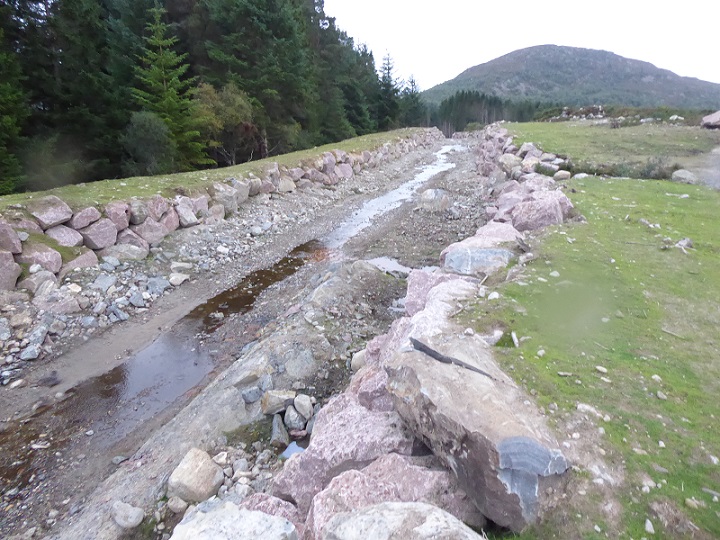
Having failed to require a new planning application and to impose new planning conditions the CNPA has left itself without means to take enforcement action should parts of the new design fail.
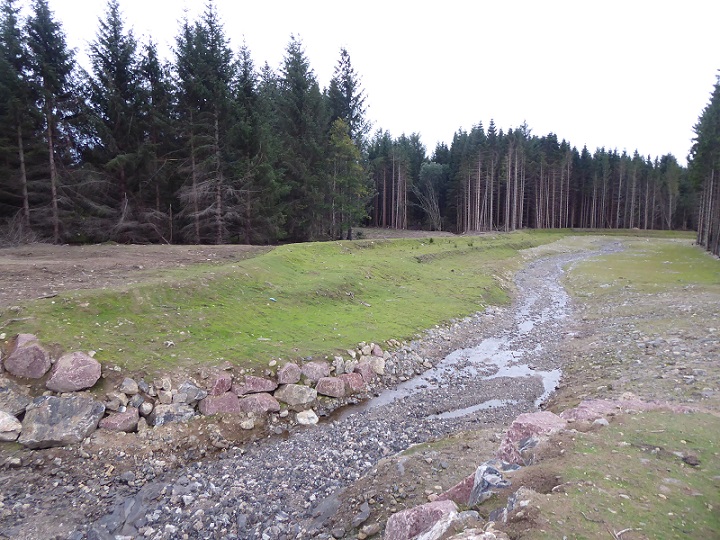
The lower section of the overflow channel appears more likely to work. Except where undercut, grass covered earth banks are generally quite resistant to floods, shedding the water. The reason the banks failed previously was not just that they were bare, they were also formed out of light peaty soil, an unsuitable growing medium, and placed far too close together.
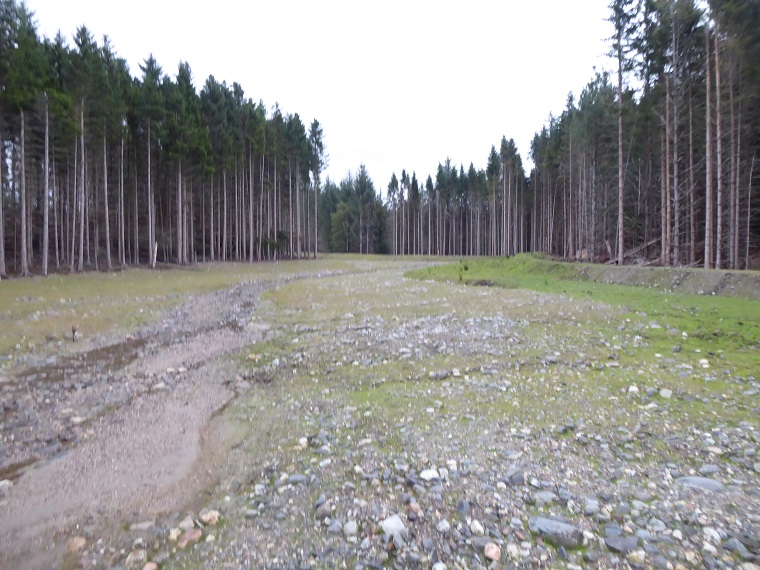
Whether the widely spaced earth banks will work depends on the volume of water that gets into the channel. While the intake from the Gynack is limited in size, the first burn that flows into the overflow can be sizeable in flood:
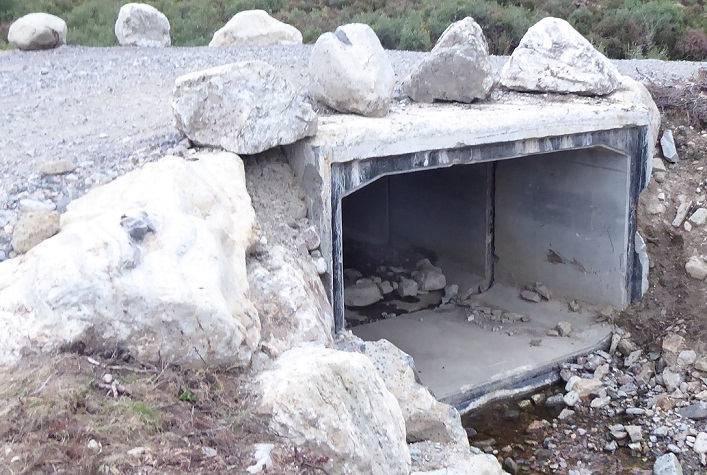
In the absence of any paperwork showing the calculations of how the potential volume of water in a flood will flow in the new channel we will need to wait and see what happens when it opens. Is that really good enough for a National Park?
The Gynack overflow planning failures
When I asked the CNPA whether the new overflow would require planning permission their response was that it would depend on the extent of the repairs. While it is arguable that the top section of rip-rap bouldering is simply a replacement for the failed scheme, the lower section is clearly a different design. Moreover the footprint of the scheme is considerably larger than the original – not just the wide flood plan between the earth banks but some of the ground by the rip rap bouldering has been extensively modified – and that alone should have required a new planning application.
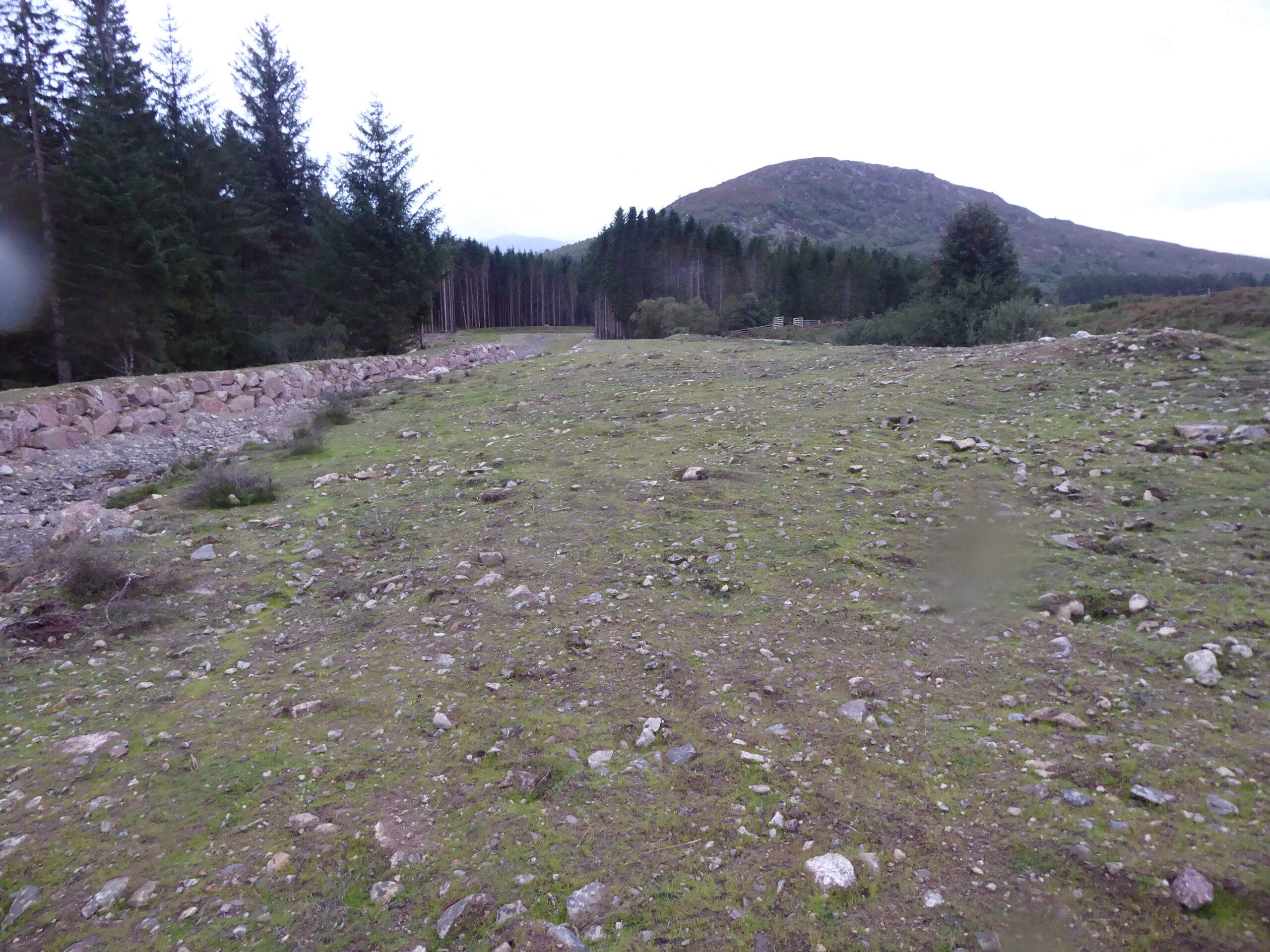
In my view, therefore, the work that was was far more than a repair – something that is supported by the contractors being on site for around four months. Unfortunately, the CNPA allowed the work to start without insisting that documentation was delivered to them first and having failed to issue a stop notice they made themselves both powerless and irrelevant. At the same time CNPA Board Members, some of whom have ecological expertise on water matters, were deprived of any opportunity to comment or influence the design for the better.
Whether it works or not and prevents some houses in Kingussie from being flooded, the sorry history of the “repaired” Gynack overflow is not worthy of a National Park. If the overflow was needed to protect people in Kingussie, then allowing it to be mothballed for five years while the Pitmain Estate decided how to fix it appears negligent in the extreme. Moreover, instead of using the opportunity to promote new standards of excellence in river channel engineering, the CNPA has allowed what appears to be a poorly constructed eyesore which will be of little benefit to wildlife.
In a world where public authorities were self-critical the CNPA Board would be organising a site visit with the Minister responsible for National Parks, Lorna Slater, so both they and the Scottish Government can learn from what has gone wrong. Rather like the Loch Lomond Trossachs National Park Authority and the Cononish goldmine (see here), however, I doubt most have any idea of what has gone wrong. Our National Parks need to be made far more democratic and increase the levels of board involvement in decision-making.
Unfortunately we don’t live in a world where public authorities are self-critical with a culture of learning from mistakes. There are ‘floods’ of examples (excuse the pun) of not just our National Parks spending huge efforts (and money) to cover up their mistakes and consequently not learning from their mistakes. That culture change needs to be driven from the top – the Scottish Government……..but unfortunately they are by far the worst offenders. The subordinate public authorities just meekly follow this bad example.